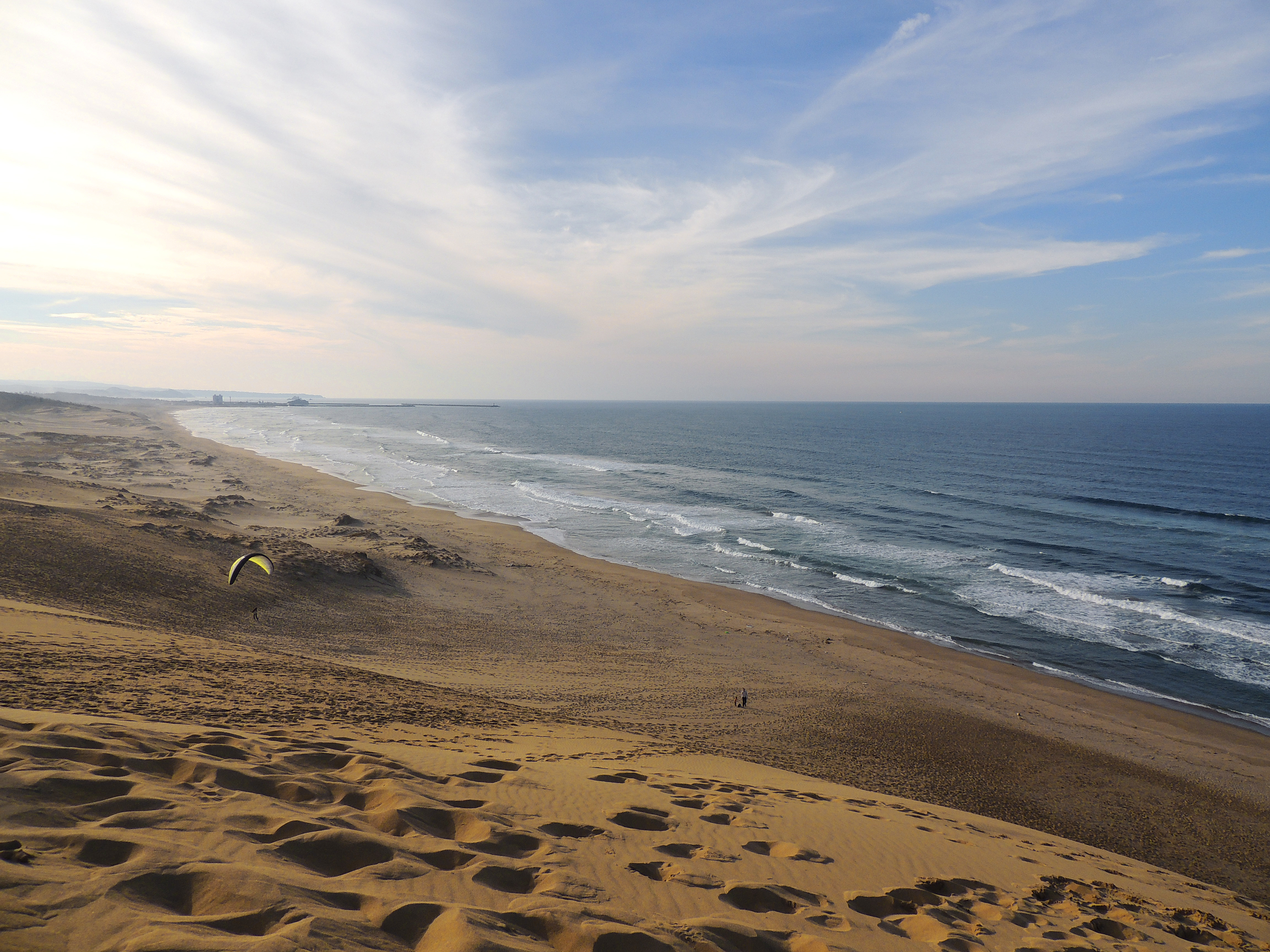The region north of the Chugoku mountains in western Honshu is known as San'in — "the shadow of the mountain." In Tottori Prefecture, these craggy mountains give way to stretches of fertile farmland that butt up against the icy Sea of Japan. The erratic weather and severe terrain here conspire to create a landscape in constant flux, but the tangle of shadows reward patient eyes with radiant glimmers of what they hide.
The afternoon I arrive in Tottori the sandbanks made famous by Kobo Abe's 1962 novel "The Woman in the Dunes" rise up like piles of gold, set vividly against a sapphire sky. From the crest of the largest dune I can see the Sea of Japan stretching out below, a steelier shade of blue than the sky it meets at the horizon. I watch as paragliders drift lazily back and forth on the updrafts alongside a few stoic kite hawks.
The protagonist in Abe's story finds himself held prisoner amid the sand, forced to carry on the Sisyphean task of clearing grain after minuscule grain of sand from a neglected village whose inhabitants are wary of the outside world. Indeed, the country's least populous prefecture has a widespread reputation for being cloistered, a distinction not aided by Gov. Shinji Hirai's favorite boast that Tottori is the only prefecture in Japan without a "sutaba" (the local nickname for Starbucks) and the only one with a "sunaba" (sandbox).



















With your current subscription plan you can comment on stories. However, before writing your first comment, please create a display name in the Profile section of your subscriber account page.